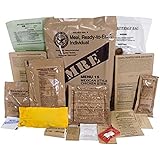How to Build a Survival Shelter in the Wilderness
Top 4 Semantic Keyword Phrases
- Types of Wilderness Shelters
- Materials for Building a Shelter
- Steps to Construct Your Shelter
- Essential Tips for Staying Safe
Types of Wilderness Shelters
Understanding Different Shelter Options
I’ve found that knowing your various shelter options is key when you’re out in the wild. From natural materials to simple frames, each type serves a purpose depending on the environment and your needs. For example, a lean-to is a classic choice that offers decent protection and is easy to construct if you find a solid tree to lean branches against.
Another popular type is the debris hut, which is cleverly designed to keep you warm by utilizing layers of natural debris like leaves, pine needles, and even grass, trapping air for insulation. It’s super cozy, but it takes a bit longer to build, so if you’re in a rush, you might want to prioritize differently.
Don’t overlook the tarp shelters either! They’re lightweight, versatile, and perfect for a quick setup if your gear includes a tarp. I’ve discovered that knowing a few different types makes it easier to adapt to whatever situation you find yourself in.
Evaluating Your Location
When choosing the right shelter, your location plays a huge role. I like to scout the area first for wind direction and potential hazards, like falling branches or flooding zones. A good rule of thumb is to avoid low-lying areas, as they tend to trap cold air and can get damp.
Look for natural windbreaks, like large rocks or dense foliage. They can really help in determining where to set up your shelter while providing extra protection from harsh weather.
Additionally, always check for resources nearby, such as water or firewood. Trust me, having these essentials within reach saves you a lot of hassle down the line when you’re hungry or cold.
== > What if ... Get a FREE Subscription to PREPARE
Seasonal Considerations
Building a shelter isn’t a one-size-fits-all scenario; the season changes everything! In winter, your priority shifts to insulation and keeping heat trapped; thus, a thicker structure with more debris is essential. I once spent a long night in an inadequately insulated shelter, and let’s just say, never again!
In the summer, ventilation becomes your best friend. You’ll want something that keeps you cool and protects you from sun exposure while still providing some form of rain protection.
If you can, train in various seasons to see how the shelters hold up. You’ll learn firsthand the pros and cons of each type based on the weather conditions.
Materials for Building a Shelter
Common Natural Resources
When it comes to materials for your shelter, nature’s got your back! Branches make for excellent structural support. I usually look for dead or downed wood, as it’s typically more pliable and easier to work with. Whole logs can be great too, but they can be heavy and challenging to move if you’re alone.
Leaves and grasses play a crucial role in insulation. When you pile them onto your shelter, they create a thick layer protecting you from the elements. Plus, they’re usually super easy to find!
Then there are stones; they may not be the first thing that comes to mind, but they can help create a sturdy base or even be used for a fire pit, should you need one. Every resource counts in survival situations.
Tools and Equipment
While you can get by with just your hands, having a few tools can drastically improve your shelter-building experience. A multi-tool is a lifesaver for cutting and shaping wood. I can’t tell you how many times I’ve been thankful for having a sturdy knife when I’m frantically trying to carve out my stakes.
If you’ve got a saw or an axe, that’ll be huge for cutting larger branches. But remember, it’s about evaluating the situation—sometimes, even a sturdy stick can do the trick in a pinch!
Always keep your gear organized and accessible. Nothing is worse than losing your tools in the chaos or forgetting where you put them while managing your shelter and other survival tasks.
Sourcing Your Materials Responsibly
As you’re scavenging for building materials, be mindful of your impact on the environment. I’ve learned that over-harvesting can leave a place looking barren and can disturb local wildlife habitats. Take only what you need and be sure to use materials that are already downed.
Additionally, some areas may have regulations about what you can and can’t take. Respecting nature not only helps maintain the environment but also keeps you out of trouble. You want to enjoy the beauty around you, not wreak havoc!
Steps to Construct Your Shelter
Planning Your Layout
Before jumping into building, take a moment to plan your layout. Visualizing how your shelter fits into the landscape is crucial. You don’t want to find out halfway through that you’ve set up in a weird way that doesn’t really work!
I like to sketch a quick draft in the dirt or just mentally map it out. Decide where your entrance will go, how much space you’ll ultimately need, and where the best materials are located around you.
Having a solid plan helps streamline the build process, making it less cumbersome. Plus, it gives you a moment to strategize if you need to make adjustments.
Building the Framework
Once you’ve got a plan, it’s time for action! Start by creating a solid frame using the larger branches. Lean them against a sturdy tree or rock, or create a triangular shape for better stability.
I always remind myself that the structure doesn’t have to be perfect—it just has to be functional! Use smaller twigs to cross-brace your framework and make it more resilient against wind and rain.
After your frame is up, it’s time to make the outside look good—build it up with leaves and debris for that cozy vibe. Covering the frame not only makes it look like a shelter but also adds strength and insulation.
Finishing Touches
Don’t forget about comfort! I usually line the inside with dry leaves or grasses to create a bedding area; it makes a world of difference when it’s time to crash.
If you’re building a bigger shelter, consider adding a small fire pit in front. It creates warmth and light but do it safely away from the actual shelter. The last thing you want is an unplanned BBQ!
Lastly, add personal touches, like a small storage area for your gear. Keep it off the ground to protect it from moisture. A little bit of organization goes a long way when you’re in the wild.
Essential Tips for Staying Safe
Understanding Weather Patterns
Knowledge of the local weather can save your life. I can’t stress this enough; pay attention to the signs! You can’t always rely on a weather app. I often gauge the sky’s mood by observing the clouds and changes in wind direction—this helps me anticipate any incoming storms.
Keeping an eye out for changes allows you to prep your shelter. Reinforce any weak spots and stock up on resources in case you’re stuck for a while.
Staying aware and informed is a simple yet critical part of survival. It’s all about being proactive rather than reactive.
Wildlife Awareness
Every wilderness area has its share of critters. I always respect their space but keep an eye out for anything that can nestle into your shelter uninvited. Be sure to avoid areas known for larger predators, and always pack food securely to avoid attracting them.
Edible plants can be helpful for survival, but I recommend knowing which ones are safe (or what to avoid!). It’s a good idea to familiarize yourself with local wildlife—this knowledge could be vital.
A good rule of thumb is: the more aware you are, the less likely you’ll have a run-in with unwanted guests.
Caring for Your Shelter
After putting in all that effort, you want to maintain your shelter. Conduct regular checks on your structure, especially after severe weather. The elements can be harsh, and little repairs can make all the difference in prolonged comfort.
If it rains, ensure drainage is functioning so you don’t end up in a soggy situation. Additionally, after a windy night, check for any items that might have blown away or if your structure needs reinforcing.
Staying attentive makes your wilderness experience much more enjoyable and vastly increases your chances of staying safe and secure.
FAQ
What type of shelter is best for cold weather?
A debris hut is a top choice for cold environments as its layered insulation effectively traps heat. Lean-tos can work, too, but make sure to pile on plenty of leaves and other materials.
Do I need special tools to build a shelter?
Not necessarily! A sturdy knife or multi-tool can go a long way. However, if you have access to larger tools like saws or axes, they definitely make the building process easier.
How long does it take to build a survival shelter?
It really depends on the type of shelter and your skill level. A simple lean-to can take about 30 minutes, while something more complex like a debris hut could take significantly longer.
Are there any must-have supplies for shelter-building?
Absolutely! While natural materials can be used, a sturdy multi-tool, some rope, and a tarp will make your life much simpler. Always prioritize tools that assist in cutting and shaping your materials efficiently.






